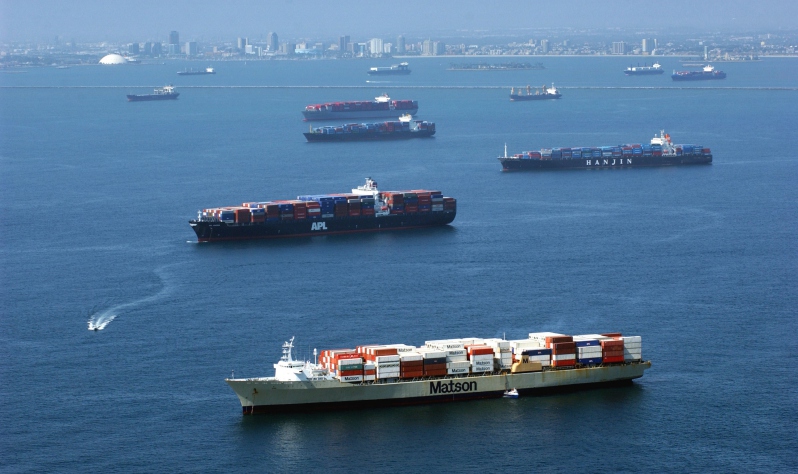
U.S. maritime protectionism fails policy and economic goals.
The United States is one of the world’s most aggressive practitioners of maritime protectionism.
In areas ranging from dredging to the domestic transportation of goods and passengers, protectionist laws severely curtail the ability of Americans to use vessels registered or even built in other countries. These trade restraints impose a heavy burden on the U.S. economy, with estimates of their costs reaching into the tens of billions of dollars.
Ironically, the very domestic maritime industry meant to benefit from this protectionism is instead riddled with inefficiencies, high costs, and stagnation.
The policy failure is near absolute.
The best known of these protectionist laws is the Jones Act, a 1920 law that restricts the domestic waterborne transportation of goods to vessels that are U.S.-flagged, U.S.-built, and mostly U.S.-crewed and owned.
But the Jones Act is only the latest iteration of maritime protectionism that reaches back to the country’s earliest days. In July 1789, the U.S. Congress, in one of its first acts, passed a tariff bill that levied significantly heavier duties on foreign vessels engaged in domestic commerce than U.S. vessels. Later, in 1817, foreign vessels were banned completely, and domestic commerce was reserved to vessels that were both U.S.-flagged and U.S.-built.
Blessed in those early years with abundant lumber, excellent shipbuilding know-how, and some of the world’s best mariners, the United States suffered minimal burden from those restrictions at that time. Indeed, some maritime experts argue that back then the restrictions were cost-free given the competitiveness existing within the related industries.
But today’s context is much different. Once offering some of the world’s best quality and lowest prices, the competitiveness of protected U.S. shipbuilding eroded to the point where, by the late 1800s, U.S.-built ships were estimated to cost 25 percent more than those constructed in British shipyards. This deterioration of U.S. competitiveness has only continued. Today, U.S.-built merchant ships are estimated to cost four to five times as much as those built abroad.
These price differences in large part reflect a gaping chasm in productivity between U.S. and foreign shipyards. Rather than carving out a niche in the fiercely competitive international shipbuilding market, U.S. shipbuilders instead subsist on a far smaller captive domestic market.
As a result, the U.S. ship construction sector suffers from reduced levels of specialization and economies of scale, both of which are vital to increasing efficiency and productivity. Walling this sector off from international competition has had the predictable effect of rendering it vastly uncompetitive.
The downside impact of today’s high shipbuilding costs on the rest of the maritime industry has been tremendous. Faced with eye-watering sums to purchase new ships, vessel operators only do so with extreme reluctance. Internationally, the useful life of a ship tends to fall between 20 and 25 years. Jones Act ships, however, are usually not scrapped until after they reached 40 years of service. Consequently, vessels in the U.S. domestic fleet are significantly older and less efficient than the international average.
Exorbitant ship construction costs, along with operating costs far higher than those of foreign fleets—partly due to a 50 percent tariff on foreign shipyard repairs—have made the United States home to some of the world’s most expensive shipping.
A 2012 report by the Federal Reserve Bank of New York, for example, found that shipping a container of household and commercial items from the East Coast of the United States to Puerto Rico was roughly twice the price of sending the same container to nearby Jamaica or the Dominican Republic.
In 2014, the Congressional Research Service noted that shipping oil from Texas to refineries along the Northeast coast was two to three times more expensive than sending the same barrel of oil on a non-Jones Act ship to Canada.
Such high shipping rates severely discourage the use of Jones Act ships. Of the 96 oceangoing ships currently compliant with the law—down from 257 in 1980—the overwhelming majority are used to transport goods to those parts of the country where no other transportation option exists.
Jones Act containerships, for example, tend to shuttle goods between the U.S. mainland and its non-contiguous states and territories, while Jones Act-compliant tankers tend to serve those areas where the U.S. pipeline network either does not extend or lacks sufficient capacity.
Jones Act ships are so costly that even Jones Act vessel operators try to avoid them.
In a bid to save on costs, an increasing proportion of domestic waterborne cargo is now carried on seagoing vessels called articulated tug barges (ATBs), which are both cheaper to build than ships and require fewer crew members. ATBs feature a special notch in the stern of the barge that the tugboat’s bow enters and is then held in place via heavy pins. ATBs form what the naked eye may perceive as a single vessel, even though they are not.
Although less costly, these pseudo-ships are generally an inferior option as confirmed by the fact that they are seldom used outside of the protected U.S. market. Of the special tugboats used to power ATBs worldwide, 65 percent are found in the United States.
Forced use of U.S.-built vessels exacts a high toll on vessel operators, yet it has utterly failed to produce a vibrant shipbuilding industry. U.S. shipyards’ extreme lack of competitiveness has stifled demand for their offerings, resulting in the combined output of a mere two to three commercial ships in a typical year. In comparison, a single South Korean shipyard is capable of producing around 80 ships a year.
A handful of major shipyards still remain in the United States, less because of the Jones Act than because of the enormous sums spent by the U.S. military, which in 2019 accounted for nearly 80 percent of the industry’s construction and repair revenue.
By any measure, U.S. maritime protectionism is a failure, serving neither the United States’ broader economic interests nor those of the very industry whose fortunes the policy is meant to promote. Only through a decisive break with the status quo, either through deep reforms or the complete scrapping of the Jones Act and related laws, can the United States relieve itself of this burden.




